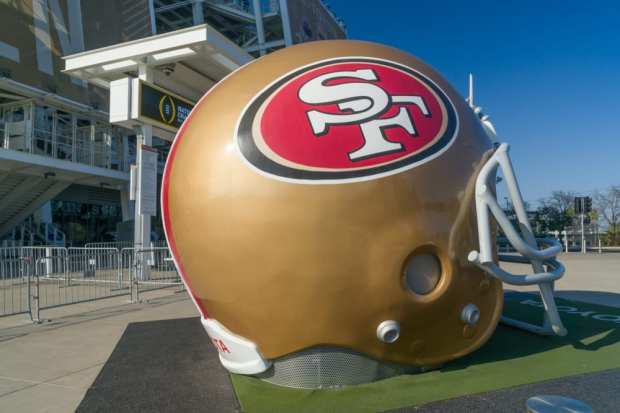What The San Francisco 49ers’ New Loyalty Rewards Play Means For The Field

As consumer preferences change and competition becomes more keen, retailers and commerce operators are under even more pressure to get creative with loyalty programs. The latest example of that comes from the NFL.
According to CNBC, the “San Francisco 49ers announced Monday that season ticket holders next year will get unlimited food and beverage items at Levi’s Stadium, as part of the team’s ‘Member Inclusive Menu’ initiative. Partnering with Levy Restaurants, the 49ers will be the first NFL team to offer an array of free, unlimited food for die-hard fans.”
Rebates and cash-back offers sound great in theory — the customer purchases something they wanted anyway, and get a small incentive payment to reward them for making the buy. It is unsurprising, therefore, that they are so popular with consumers. One study found that 75.4 percent of consumers said they were more likely to make a purchase if a product offered a rebate, while other research found that 84 percent of consumers view rebates as a savings opportunity, and more than half actively search out products with rebates.
Simple and Easy
When it comes to better loyalty and rewards — especially as a new decade looms — simple and easy are proving to be wise tactics. According to data from ConsumerAffairs, rebate redemption rates generally range widely — from 5 percent to 80 percent, depending on the value of the rebate. As for why people don’t redeem them, the leading reason is 41 percent forget to submit them, 25 percent lose a paper form necessary for redemption, 20 percent can’t be bothered and 14 percent give up because the process is too complicated.
The problem, Ingo Money CEO Drew Edwards told Karen Webster in a recent PYMNTS interview, is friction — and the fact that if a consumer must work hard to chase a rebate, and receive it via paper check at the end of the process, they are probably going to bail out. That is actually pretty bad news, he said.
“I swear, this kind of stuff really doesn’t change anyone’s buying behavior — or, at least, not a statistically significant number of people,” Edwards told Webster. “There are people who will do it — I have relatives who keep a three-ring binder full of coupons. But most people aren’t extreme couponers, and if you are sending someone a check for the rebate, you are lost in the dark ages.”
Rakuten Rewards (formerly known as eBates), the rebates wing of global eCommerce giant Rakuten, as of the end of 2019, sends roughly three-quarters of its rebate payments to customers via paper check — a fact that Edwards said is actually kind of remarkable, if a bit disturbing.
Last Resort
“I don’t see how sending a check is anything other than a last resort,” Edwards said, because there are so many better choices out there.
There’s the plethora of cash-card offerings that have exploded in the market over the last few years from the likes of Apple, Samsung, Square and Uber — which involve creating an easy-to-access virtual card that can live online or in a consumer’s digital wallet, and pushing funds directly to that. This, he noted, gives the consumer the option of immediately turning those rebated funds toward their next purchase, which is (generally speaking) the end goal of any rebate program.
Even better, Edwards said, some of the clients Ingo Money works with are even skipping the virtual card step, and allowing the customer to choose during account creation where they want their rebate funds to be pushed. When the customer makes a qualifying purchase, an application programming interface (API) pings the originator of the rebate that it has happened, and the rebate automatically pushes to the consumer account.
Expect more movement on loyalty — and more efforts to simplify the process — as the football season goes on, and as the new decade begins.
